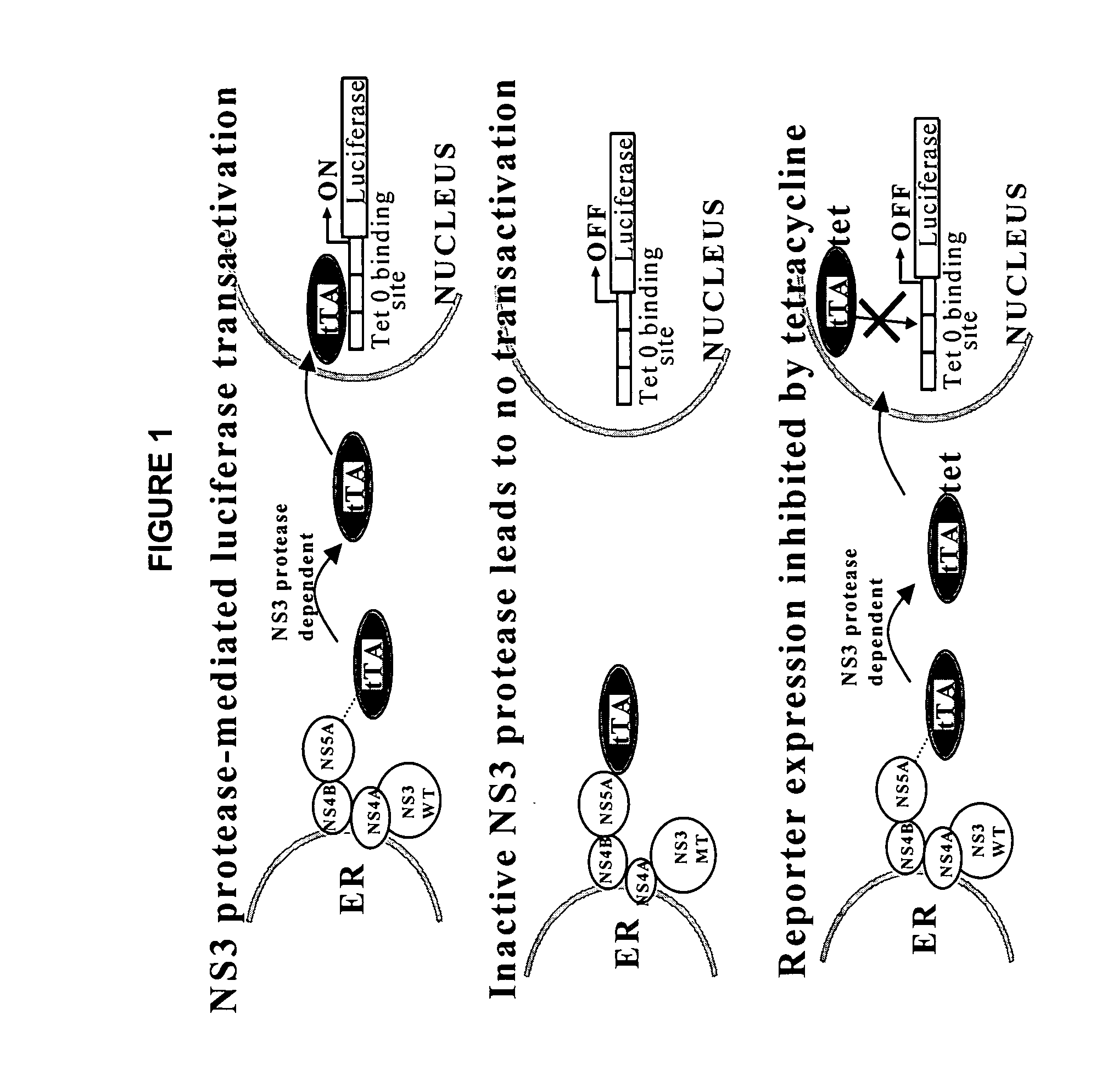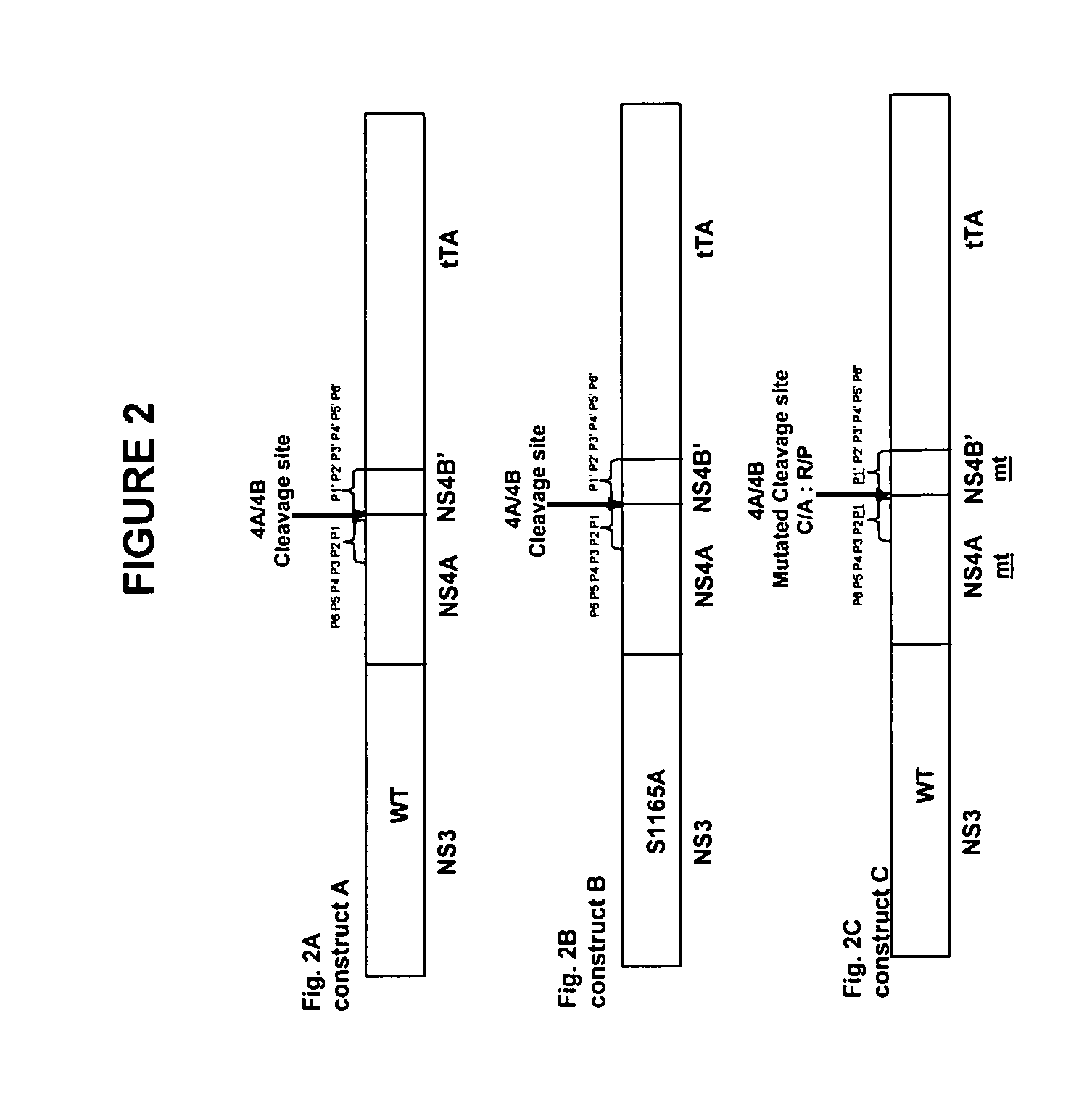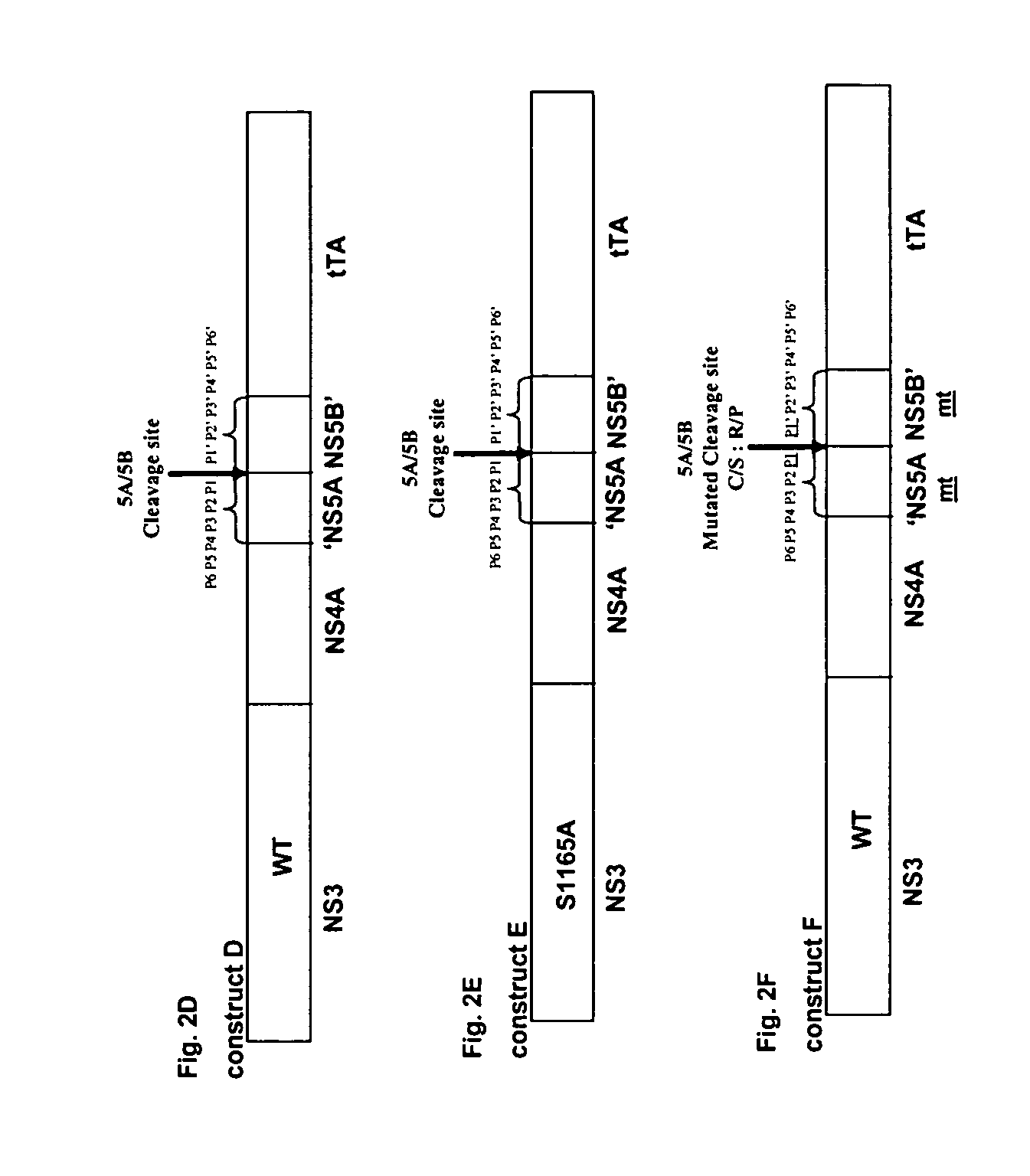Surrogate cell-based system and method for assaying the activity of hepatitis C virus NS3 protease
a cell-based system and a technology for hcv infection, applied in the field of mammalian cell culture system and method for assaying the activity of hcv ns3 protease, can solve the problems of large proportion of relapse after termination of treatment, no broadly effective antiviral compounds for treating hcv infection, and inability to establish the role of cellular and humoral immune responses in protecting against hcv infection and disease. , to achieve the effect o
- Summary
- Abstract
- Description
- Claims
- Application Information
AI Technical Summary
Benefits of technology
Problems solved by technology
Method used
Image
Examples
example 1
RT-PCR OF HCV 1b and Sequencing of Amplified Product
[0154] Human serum sample carrying the HCV 1b RNA was reverse transcribed and amplified using 12 sense and anti-sense primers spanning HCV 1b cDNA sequence (HCV J4 / 83; accession number D13558). The 3′-end sequence was amplified using primers derived from the HCV (accession number D63922) described by Kolykhalov et al. (1996). RT-PCR reactions generated 4 overlapping fragments covering the entire HCV-1b. The fragments were assembled through digestion at unique restriction enzyme sites and ligated forming the full length HCV cDNA. This resulting cDNA was sequenced in its entirety and used as a template in all amplification reactions, the amplification products were used in the construction of the chimeras described in this application. The sequenced polyprotein region fused to the tTA is shown in SEQ ID NO 1 and the translated amino acid sequence in SEQ ID NO.2.
example 2
Amplification of the HCV Fragments Used in Constructing the Chimeras
[0155] The forward primer, GGCGCTAGCGCGCCCATCACGGCCTAC (SEQ ID NO 3) complementary to the 5′-end of the NS3 gene contains an Nhe 1 site was used in all the amplification reactions. All the reverse primers complementary to the 3′-end, used herein contain an Xba 1 site. The reverse primer GGCTCTAGAGTAAGGGAGGTGT GAGGC (SEQ ID NO 4) was used to amplify the sequences for chimeras A and B and includes the NS4B P1′ to P6′ cleavage site. The reverse primer GGCTCTAGAGTAAGGGAGGTGTGAGGGGCGCTCTTCC (SEQ ID NO 5) was used to amplify the HCV sequence for chimera C and corresponds to the NS4B P1′ to P6′ cleavage site in which substitutions in the NS4A / NS4B P1-P1′residues are introduced.
[0156] The two overlapping reverse primers, GCAGCAGACGACGTCCTCGAATTCCCGGTAG AG GAC (SEQ ID NO 6) and GGCTCTAGACCATGTGTAGGACATCGAGCAGCAGACGACGTCCTC (SEQ ID NO 7) were used to amplify the HCV sequences for chimeras D and E, in which the NS4A / NS4B cle...
example 3
Visualization of HCV-tTA Fusions in Transfected / T7 Vaccina Virus (vvT7-3) Infected Cells
[0170] Since the expression of the HCV NS3 protease with the CMV promoter was too low for visualization by Western analysis, we verified the activity of the protease in each of the chimeras by the expression of the fusion proteins in 293 cells using the vaccinia virus T7 (vvT7-3) expression system (Elroy-Stein, O. and Moss, B., 1998).
[0171] Cells grown to 60% confluency in 6 well plates in DMEM-10% FBS were infected with wT7-3 (moi 10-15) and transfected with 5 μg of pCR3.1 HCV-tTA constructs A, B and C using the calcium phosphate method. Eighteen hours post-transfection, the cells were harvested and proteins from whole cell lysate resolved by SDS-PAGE, electrophoretically transferred to a membrane and the membrane probed with HCV specific polyclonal antibodies.
[0172] Plasmid pCR3.1 containing chimeras A, B, C, D, E, F, G, H or I were transfected into the vvT7 infected 293 cells and the HCV pr...
PUM
| Property | Measurement | Unit |
|---|---|---|
| Time | aaaaa | aaaaa |
| Time | aaaaa | aaaaa |
| Time | aaaaa | aaaaa |
Abstract
Description
Claims
Application Information
 Login to View More
Login to View More - R&D
- Intellectual Property
- Life Sciences
- Materials
- Tech Scout
- Unparalleled Data Quality
- Higher Quality Content
- 60% Fewer Hallucinations
Browse by: Latest US Patents, China's latest patents, Technical Efficacy Thesaurus, Application Domain, Technology Topic, Popular Technical Reports.
© 2025 PatSnap. All rights reserved.Legal|Privacy policy|Modern Slavery Act Transparency Statement|Sitemap|About US| Contact US: help@patsnap.com



